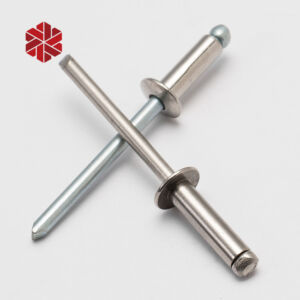Blind rivets are a type of connection widely used in engineering and manufacturing fields. Their unique design and functionality provide reliable connection solutions for a variety of applications. The following is an introduction to blind rivets.
The blind rivet is a mechanical connecting element, usually consisting of a nail body, a core rod and an expansion sleeve. Its unique design causes the core rod to be stretched during the connection process, forming a high-friction connection with the casing, thereby producing a strong anchoring effect at the connection site. This type of connection not only provides good tensile strength, but also effectively resists vibration and impact.
The installation process of blind rivets is relatively simple. You only need to insert the rivet body into the hole, and then apply tension to make the core rod detach and form a reliable anchor in the casing. This process requires no special equipment and can usually be completed quickly and efficiently on site.
In engineering applications, blind rivets are widely used to connect thin plate materials, dissimilar materials, and parts that cannot be connected by traditional welding methods. Due to its flexibility and convenience, it has been widely used in automobile manufacturing, aerospace, construction and machinery manufacturing and other fields.
Blind rivets have many advantages. Blind rivets can provide reliable high-strength connections and are suitable for a variety of engineering requirements. Since the joining process of blind rivets does not create cracks in thin sheets, they are ideal for joining thin sheet materials. Compared with welding, the installation process of blind rivets does not require an external heat source and avoids thermal effects on the material. Can connect workpieces of different materials, including connections between metals and non-metals.
Overall, blind rivets are reliable, efficient, and widely applicable connecting elements, providing more choices for the engineering and manufacturing fields, while also playing an active role in improving connection efficiency and quality.






